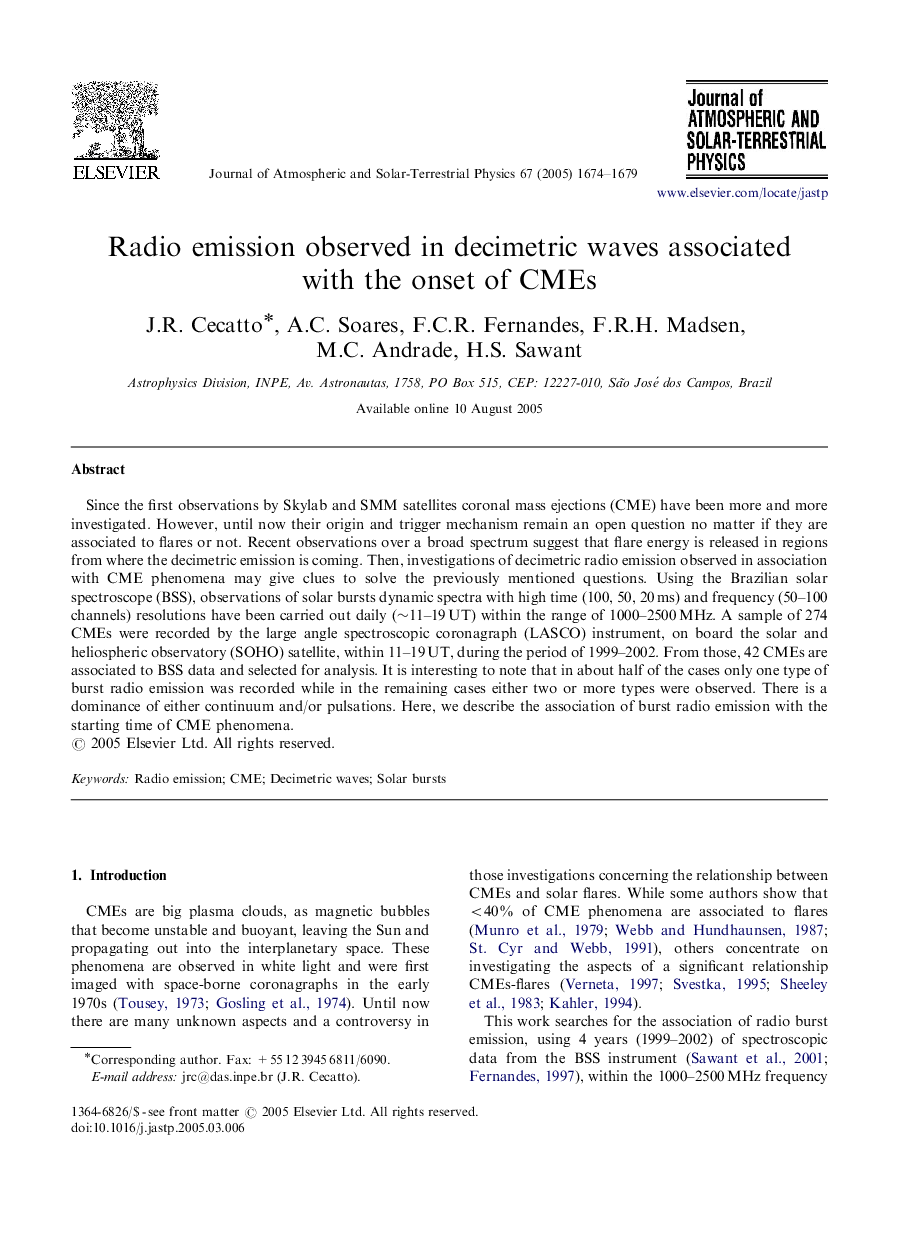| Article ID | Journal | Published Year | Pages | File Type |
|---|---|---|---|---|
| 9827666 | Journal of Atmospheric and Solar-Terrestrial Physics | 2005 | 6 Pages |
Abstract
Since the first observations by Skylab and SMM satellites coronal mass ejections (CME) have been more and more investigated. However, until now their origin and trigger mechanism remain an open question no matter if they are associated to flares or not. Recent observations over a broad spectrum suggest that flare energy is released in regions from where the decimetric emission is coming. Then, investigations of decimetric radio emission observed in association with CME phenomena may give clues to solve the previously mentioned questions. Using the Brazilian solar spectroscope (BSS), observations of solar bursts dynamic spectra with high time (100, 50, 20Â ms) and frequency (50-100 channels) resolutions have been carried out daily (â¼11-19Â UT) within the range of 1000-2500Â MHz. A sample of 274 CMEs were recorded by the large angle spectroscopic coronagraph (LASCO) instrument, on board the solar and heliospheric observatory (SOHO) satellite, within 11-19Â UT, during the period of 1999-2002. From those, 42 CMEs are associated to BSS data and selected for analysis. It is interesting to note that in about half of the cases only one type of burst radio emission was recorded while in the remaining cases either two or more types were observed. There is a dominance of either continuum and/or pulsations. Here, we describe the association of burst radio emission with the starting time of CME phenomena.
Keywords
Related Topics
Physical Sciences and Engineering
Earth and Planetary Sciences
Geophysics
Authors
J.R. Cecatto, A.C. Soares, F.C.R. Fernandes, F.R.H. Madsen, M.C. Andrade, H.S. Sawant,
